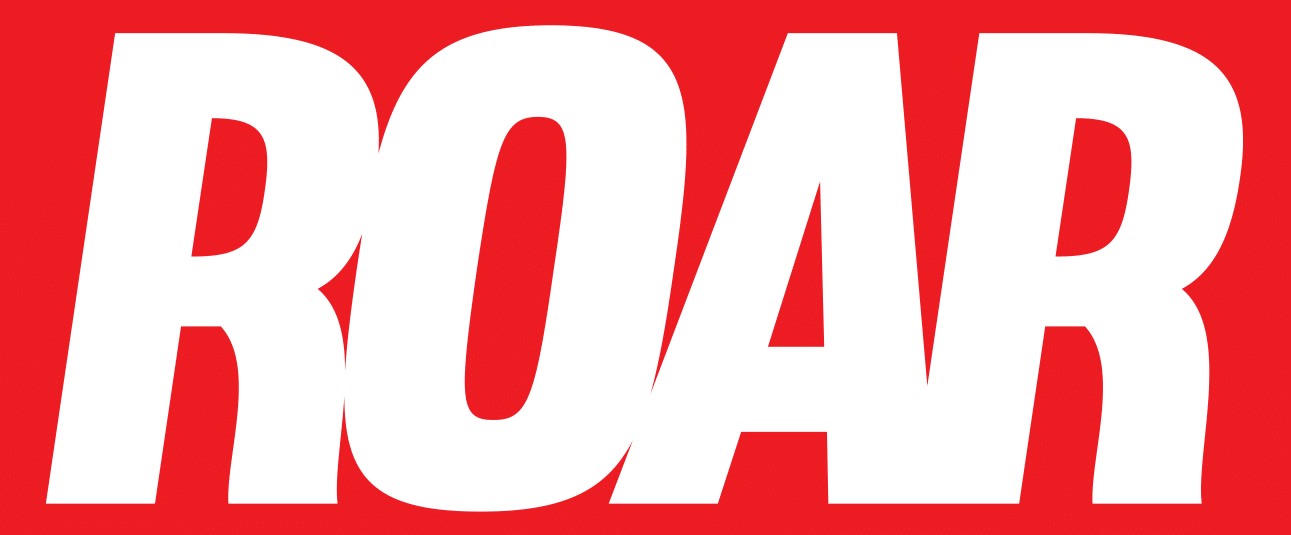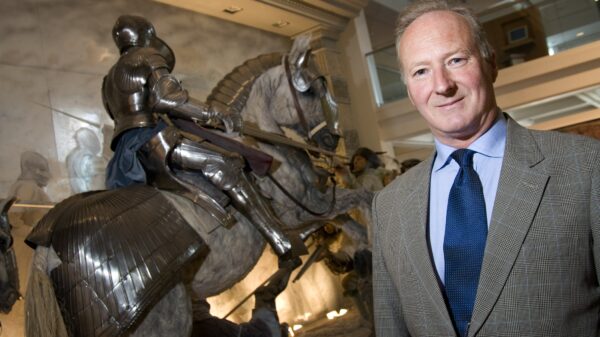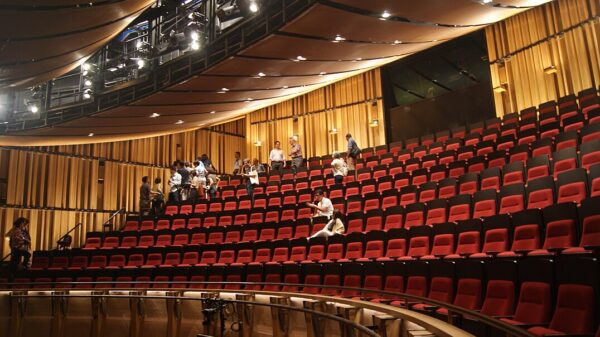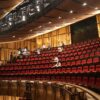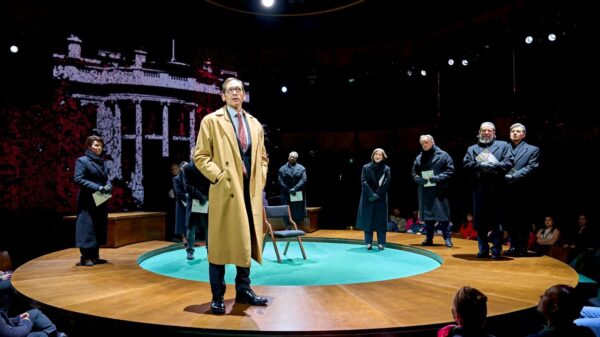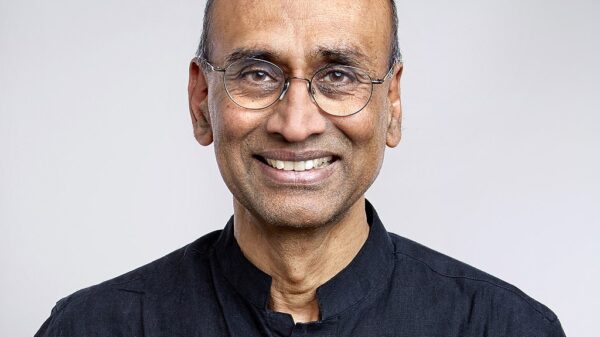Staff Writer Elijah Bodinetz in conversation with co-artistic director Anna Holmes, discussing the imminent production of ‘Shed’.
On October 28, Yorkshire-based dance-theatre company, Northern Rascals, make their London debut at the Place Theatre, with their exciting and thought-provoking production, ‘Shed’. I recently spoke to the talented writer and co-artistic director for Northern Rascals, Anna Holmes, about all things Shed, life in the performing arts industry in the current state of the UK, and much more.
“Firstly, Anna, would you like to give a bit of a summary of what to expect from this performance from a cast member’s perspective?”
“Yeah, of course. So Shed is a dance theatre piece. It’s a multidisciplinary work. We have projection involved, the spoken word involved, dance, theatre, it’s performed in a pop up shed on stage. It’s actually a wooden shed, so there’s a pop-up structure on the stage. It’s a triple bill, so there’s three short performances which are each about 20 minutes long, and in between those, there are small installations that happen just before each story that kind of sets up the next story. We’ve been working in collaboration with a digital artist called Aaron Howell from Howell Creative, based up north and basically, he’s done different installations that are inspired by the stories that then happen afterwards. There’s a team of four performers, one story has three performers in it, but most of them are duets. They kind of change characters depending on which story that they’re in.
“I’d next like to understand a bit of backstory, both personally and as a theatre company. Where did this all start for you and Northern Rascals, and how did you get into writing?”
“So Northern Rascals, which is the dance theatre company that is holding the show that I am co-artistic director of, was set up in 2017. We’re based in Yorkshire, and it’s set up by myself and Sam Ford. We’re both alumni from the Northern School of Contemporary Dance so our background is in contemporary dance. We set up Northern Rascals for the desire to make our own work really, to try to make a career of creating original performance work. It was really important to us; our ethos as a company, to really change the narrative of studio spaces and creation spaces that we’d been at previously. To really be artist led and as non-hierarchical as possible, and to work with the communities of which our stories are from. So young people from about 14 to 30 is kind of our demographic, particularly in Northern communities.
It then kind of snowballed as we got initial commissions and then things pick up and we got supported by different partners and got different awards and branched from working just in the north, just in Yorkshire to different areas in the north to now. This is our first performance in London, which is really exciting. We’re finally branching out into being more of a nationally recognised company, which is super nice.
For myself, I’ve been developing my script writing and spoken word alongside the choreography for probably the past three years. It’s specifically started with Shed. This idea of working with scripts within dance is quite a hard one to get right, and I think that we’ve found our method of way of doing it. So that’s creating an original script, pre-recording it with voice actors who are trained in the poetics and rhythmical nature of the text, then working with the dancers to embody that. It creates this accessible, cinematic, rounded storytelling experience, which makes contemporary dance specifically more accessible and as clear as possible for audiences, whilst keeping like the integrity of the work.
Shed in particular really came from lockdown. It came from this idea of, how can we create a performance that’s not limited by theatres? That was our initial thing. We created this pop-up structure that still had that intimacy and cinematic aspect that you can create in a theatre. All the experiences we’d had during lockdown and the idea of everyone having their own little narratives and stories and realising that actually, all of those individual stories were really collective experiences. The feelings of isolation and struggling with your mental health and feeling trapped, and really looking intimately at relationships. Whether you were back in your family home, or whether you were stuck with a partner or a friend, it was probably the most intense way to scrutinise a relationship. We took aspects of all of them and that’s how Shed came about, to almost peephole into other people’s stories.”
“Somewhat following on from that, how has the pandemic, and more recently, cost-of-living crisis been for the company and for you. Also, I understand that the subject of youth mental health is a big one in Shed, so just how important do you feel this topic is, and why was this chosen? Was it somewhat influenced by the lockdown?”
“Yeah, for sure. I think the way that we work with young people and with our community and our creative professional team is because we have this ethos of really breaking down boundaries and respecting each other in the room, and being kind. It creates this atmosphere where people feel like they can share and that they want to share, and they want to work from that personal, autobiographical place, which is what we’re really interested in as performers; how can we create work that’s real and authentic and is actually happening in the world right now.
I suppose it was always going to go towards looking into mental health and looking to people’s lives and experiences. I guess because it came from the Covid period, it was a time when everybody was struggling. Especially as a young person, it felt difficult to know where to place these feelings of missing all these important milestones. I think that had a massive impact as well as the environment crisis and the cost-of-living crisis. I feel like there’s this general undertone of feeling anxious in young people, and I think it’s something that’s not really going to go away unless we address it head on. Our work is not necessarily providing the answer because I don’t think we have the answer, but I think we’re providing a snapshot inside the internal world of what it is to be a young person today to hopefully raise awareness and provoke conversation.
I think what you said about cost of living in the industry, I think it’s a really tough industry to be in and it’s especially tough at the moment with the lack of funding and kind of being trapped in that cycle of not being regularly funded and the challenges that come with it. So yeah, I think that’s reflected in the work. It’s a difficult time to be a young person and an artist, I think.”
“Do you feel there is a target audience demographic for this show?”
“I think it’s telling the stories of a certain group in society, of 14- to 30-year-olds, young people, but we’re hoping to reach a wider audience than that. So even though it’s specifically the stories of that group, we want it to reach as many and as wide a range of audiences as possible. I think it’s easy that young people’s problems can kind of be minimised and kind of… pushed to the side just because they’re younger and they’re a bit dramatic and emotional or whatever, but I really don’t think that’s the case. I think that we need to be listened to by all generations to make a change.”
“If you had to describe a unique feature of the show, what would it be? And do you have a favourite scene or moment in the show to look forward to?”
“For me personally, the third story is really impactful, I don’t know if I want to say it’s my favourite, I feel like I’m cheating on all of them! But the third one really hits for me, and I think it’s because it’s particularly looking at what it means to be a woman in today’s society, so it feels slightly more personal, and it comments on like a sister relationship which I can really relate to. I think the story is more personal, more autobiographical than the other two for me.
I think what’s unique is the integration of the projection and the movement. It’s the idea of the shed, it has windows and it’s quite aesthetically pleasing. It means that you can really zoom in to really intimate moments. For instance, the parts where like the blinds get moved and shut and we might suddenly just see a snapshot of hands being held in one of the little window frames, if you get what I mean. I feel like what I love about this show is the ability to be sat in the audience and feel far away, but still being able to be as close as a camera shot.”
“Do you have any upcoming shows in the works?”
“We’re at quite an exciting time as a company. I guess everything always happens at once, so you’ve just got to roll with it when it comes. We’ve been developing a new work called Sunnyside. We’ve been developing that since April in the studio, and we have our pilot performances coming up soon.
Basically, it’s a year behind Shed, so hopefully it’ll tour next year. This one is really rooted in mental health in young men in particular and looks at sensitive things such as suicide and what it is to grow up in a northern, small, rural town. This one’s fully scripted, which is unlike Shed, which isn’t fully scripted. It follows more of a play format, but it is strongly dance. Then next year we’ve got the funds, hopefully, to create an all-female piece, so I’m really excited about that. But again, I can’t really think about it yet! However, we’ve got some really big things on the horizon, hopefully.”
“Finally, if you could describe the show in three words, or a few sentences, as a way to encapsulate the show, what would you say?”
“I would say powerful, poetic, real. Those three came to me naturally, so let’s go with that.”
In summary, as a show that tackles current, relevant topics such as youth mental health and the effects of lockdown, it’s clear that Shed is simply one not to miss, as Northern Rascals make their London debut on 28th October at the Place Theatre. Tickets are still available to purchase, so buy them whilst you can and show your support to this inspiring and exciting production and company!
